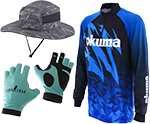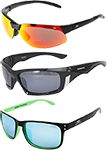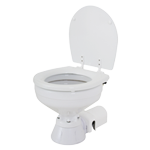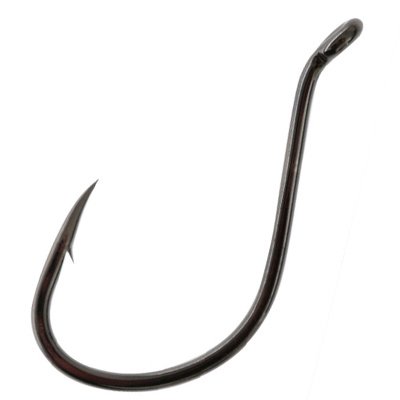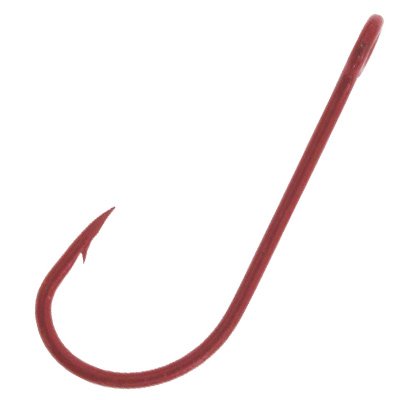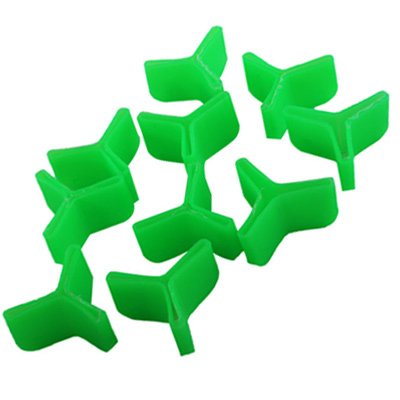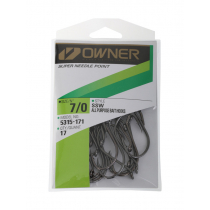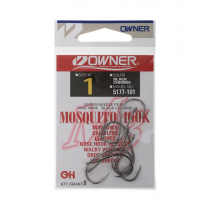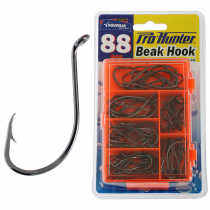Although choosing your hook may appear simple enough, there are several factors that distinguish the good hooks from the bad. In the same way there are different shapes and sizes that will meet the needs of different fishing methods. Show More...
Hook shape
There are two basic hooks shapes, all with subtle variances within these two shapes.
Octopus (Beak) Hook Octopus or beak hooks are the traditional hook style with the point of the barb of the hook pointing up and not intruding on the ‘gap’ of the hook. Striking your rod proves to be the best way to set these hooks into the fish mouth. Beak hooks are fantastic to stray line with.
Recurve (Circle) Hook commonly known as circle hooks are becoming increasingly popular. They feature a barb that's shaped back towards the shank of the hook, effectively making it look like a ‘circle’. These are ‘self-setting’ hooks as they roll into the corner of the fish’s mouth once bitten. You do'nt need to strike your rod to set these hooks. Recurve hooks dramatically increase the rate of lip hooking fish, keeping the fish in good condition for release. The most popular variance of this is the Tainawa long line hook. Circle hooks are phenomenally good for land based fishing due to their self-setting nature not requiring striking of the hooks, which can become difficult when surf casting.
Hook size
Hook size is the hardest to recommend as there is a mixture of personal preference alongside what targeted species you are after as to what hook you require. If you are fishing for smaller fish with a softer mouth such as terakihi a smaller hook (anything from 1/0-3/0) is recommended. The majority of Snapper fishing is done with hooks varying from 4/0-7/0. However up to a 10/0 can be used if you are targeting those big moochers. Another Kiwi favourite, the Kingfish, should typically be hunted down using an 8/0-10/0 live bait hook with a thicker gauge (if you are jigging, smaller, but high tensile carbon, jigging hooks are available). For anything bigger (i.e. Tuna, Marlin etc) your hook size will fully be dependent upon where you are fishing and your target species. If you are unsure of what size to use, please feel free to
ask one of our experts.
Other factors
Other factors to include when deciding what hook to buy are; the gauge (thickness) of the hook, its sharpness and quality of materials. The gauge of the hook is a good indicator to how easily the hook can penetrate the fish’s mouth (along with sharpness). The thinner the gauge, the finer point it will have and the easier it will penetrate the fish’s mouth. Thin gauge hooks not only help with setting the hook but also help aid a natural bait presentation. However, a thin gauge hook should only be selected if it is not being used on fish with enough power to crack or snap this thin hook. Thicker gauge hooks (such as live bait hooks) should be used on bigger more powerful fish, such as Kingfish. The gauge of the hook also helps determine the sharpness of the hook for the same reasons as already discussed. On top of this, a good hook will be chemically sharpened as they won’t tend to go dull as fast as a machine sharpened hook. Finding out what type of material your hook is made out of can be very hard, yet very vital if you want a top of the run hook. High tensile carbon can be found in plenty of good hooks and in many different styles. High tensile carbon allows the hooks to have a thin gauge yet remain very stiff and resilient to even the biggest and most powerful fish.
Hide



































